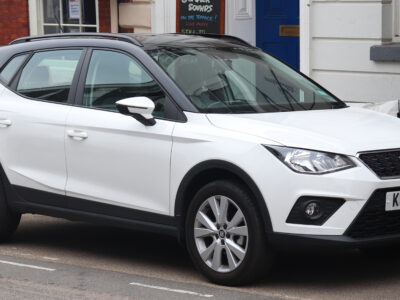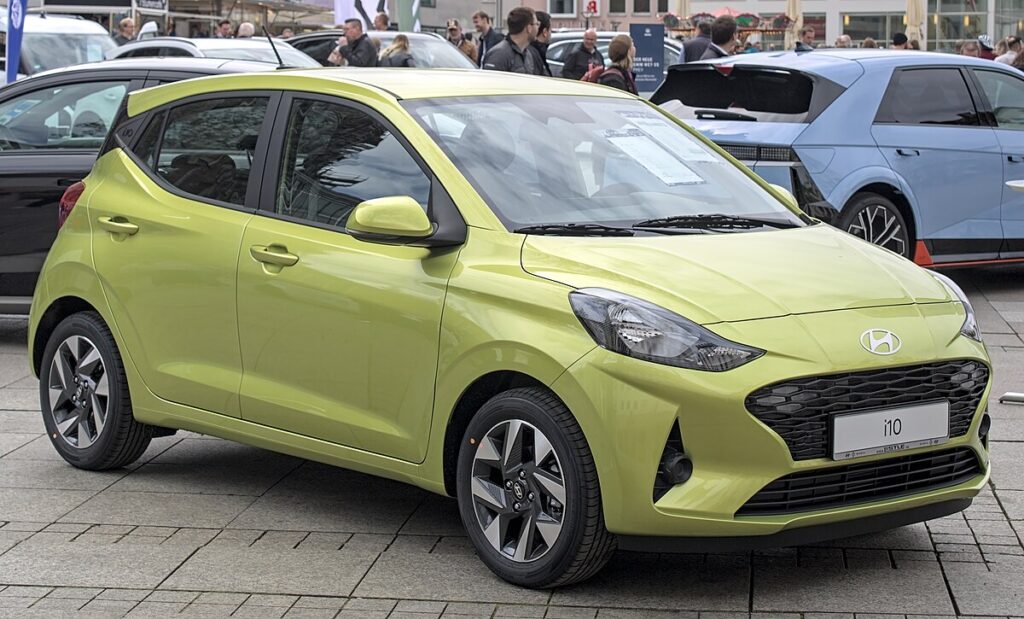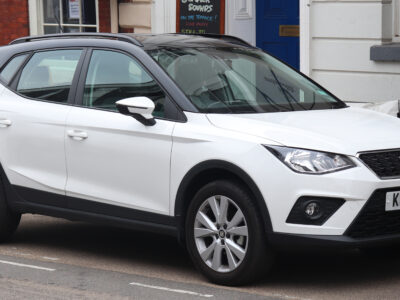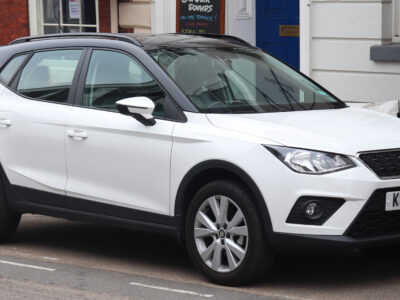
Hyundai i10 1.0 Boot Space, Dimensions, and Luggage Capacity Guide (2025 Update)

The Hyundai i10 1.0 stands out as one of the most practical city cars in its class. Despite its compact exterior, this small hatchback surprises many with its efficient use of interior space—especially when it comes to boot capacity. In this detailed guide, we explore every inch of the i10’s luggage area, providing precise measurements, capacity data, and real-world usability insights that help you understand exactly how much you can pack.
- Hyundai i10 1.0 Boot Dimensions (in cm)
- Hyundai i10 1.0 Luggage Capacity (Litres)
- Practical Usability and Real-World Luggage Examples
- Space Flexibility and Loading Convenience
- Comparison with Competitors
- Boot Space Optimization Tips
- Real-World Scenarios: What Fits Inside?
- Boot Space Visualization (Diagram)
- Storage Convenience Features
- Verdict: Compact Yet Capable
- Frequently Asked Questions (FAQs)
Hyundai i10 1.0 Boot Dimensions (in cm)
The following table summarizes the key internal boot dimensions of the Hyundai i10 1.0 model (2020 onwards):
| Dimension | Description | Measurement |
|---|---|---|
| A | Minimum Width | 102.5 cm |
| B | Maximum Height | 81.7 cm |
| C | Length (Rear Seats Folded) | 118 cm |
| D | Length (Rear Seats Upright) | 46.5 cm |
These measurements provide the foundation for understanding how efficiently the i10 can carry everyday cargo—from grocery bags to weekend luggage.
Hyundai i10 1.0 Luggage Capacity (Litres)
Below is a detailed breakdown of the Hyundai i10 1.0’s boot capacity under different configurations:
| Configuration | Measured Up To | Capacity (Litres) |
|---|---|---|
| Rear Seats Up | Parcel Shelf | 195 L |
| Rear Seats Down | Parcel Shelf | 494 L |
| Rear Seats Up | Roof | 370 L |
| Rear Seats Down | Roof | 939 L |
The i10’s luggage volume expands dramatically when the rear seats are folded, providing up to 939 litres of usable space up to the roof—ideal for bulky or irregularly shaped items.
Practical Usability and Real-World Luggage Examples
To put these figures into perspective, here’s what you can typically fit in each configuration:
With Rear Seats Up (195–370 L)
- Two cabin-sized suitcases (55 x 40 x 23 cm)
- One medium duffel bag
- A few grocery bags or small backpacks
Ideal for daily commutes, short weekend getaways, or city errands.
With Rear Seats Folded (494–939 L)
- Two large suitcases (75 x 50 x 32 cm)
- One stroller or sports bag
- A folded bicycle
- A pet carrier or travel crate
This configuration transforms the i10 into a mini cargo carrier, perfectly capable of handling larger loads or moving small furniture pieces.
Space Flexibility and Loading Convenience
The Hyundai i10 1.0 is engineered to make the most of every centimetre. Its wide boot opening (102.5 cm) ensures that even bulky luggage can be loaded with ease, while the low loading lip height minimizes lifting strain.
You may be interested in reading Hyundai i10 Engine Oil Guide: Choosing the Right Oil for Every Model and Year
Hyundai i10 Engine Oil Guide: Choosing the Right Oil for Every Model and YearHighlights:
- 60:40 split-folding rear seats for flexible storage
- Flat loading floor when seats are down
- Hidden underfloor storage compartment
- Parcel shelf to cover valuables or expand vertical space
These smart design touches enhance convenience and make the i10’s boot one of the most practical in the A-segment class.
Comparison with Competitors
To understand the i10’s real-world practicality, let’s compare its luggage space with a few rivals in the small hatchback segment:
| Model | Boot (Seats Up) | Boot (Seats Down) |
|---|---|---|
| Hyundai i10 1.0 | 195 L | 494 L |
| Kia Picanto | 255 L | 1010 L |
| Volkswagen Up! | 251 L | 959 L |
| Toyota Aygo X | 231 L | 829 L |
While some rivals offer slightly higher volumes, the i10’s square boot shape and usable loading area make it more efficient for awkwardly shaped luggage.
Boot Space Optimization Tips
Here are several practical strategies for maximizing your Hyundai i10’s luggage capacity:
- Use packing cubes or soft bags instead of rigid suitcases to fill every gap.
- Fold or remove the parcel shelf for extra vertical clearance.
- Slide forward the front passenger seat when transporting extra-long items.
- Utilize underfloor compartments for storing tools or valuables discreetly.
- Distribute weight evenly to maintain driving stability and visibility.
These small adjustments can make a big difference during road trips or moving days.
Real-World Scenarios: What Fits Inside?
Below are examples of real packing scenarios illustrating how the Hyundai i10’s boot performs in everyday use:
Weekend Getaway
- 2 carry-on suitcases
- 1 soft duffel bag
- 1 picnic basket
✅ Fits perfectly with seats up.
Airport Transfer
- 1 large suitcase
- 1 medium suitcase
- 2 backpacks
✅ Requires folding down one rear seat (60:40 split).
Family Shopping
- 6–8 grocery bags
- A small stroller or folded pushchair
✅ Fits comfortably with parcel shelf removed.
You may be interested in reading Hyundai i10 Engine Oil Guide: Choosing the Right Oil for Every Model and Year
Hyundai i10 Engine Oil Guide: Choosing the Right Oil for Every Model and Year Hyundai i10 Wiper Blade Sizes (2007–2025): Complete Guide for Every Generation
Hyundai i10 Wiper Blade Sizes (2007–2025): Complete Guide for Every GenerationBoot Space Visualization (Diagram)
To help visualize the boot layout and measurements, here’s a simple Mermaid diagram:
graph TD
A[Boot Width: 102.5 cm] --> B[Height: 81.7 cm]
B --> C[Length with Seats Up: 46.5 cm]
C --> D[Length with Seats Down: 118 cm]
D --> E[Usable Capacity: 195 L – 939 L]
This schematic provides a quick visual understanding of how the boot dimensions expand when folding the rear seats.
Storage Convenience Features
The Hyundai i10 1.0 complements its practical luggage space with several smart storage solutions throughout the cabin:
- Generous glovebox
- Door pockets with bottle holders
- Cup holders in front console
- Rear seat storage pockets
- Smartphone tray and USB ports
These details enhance comfort and usability, making the i10 a top choice for urban families and commuters alike.
Verdict: Compact Yet Capable
The Hyundai i10 1.0 may be small, but its boot is impressively versatile. Whether you’re navigating city streets or planning a road trip, it delivers a balanced blend of compactness and cargo practicality. With up to 939 litres of storage, adjustable seating, and easy access, it’s an ideal hatchback for those who want efficiency without compromise.
Frequently Asked Questions (FAQs)
1. How big is the Hyundai i10 1.0 boot?
With the rear seats up, the boot offers 195 litres up to the parcel shelf, expanding to 939 litres when seats are folded down and loaded up to the roof.
2. Can a stroller fit in the Hyundai i10?
Yes, a compact stroller fits easily when the parcel shelf is removed or one rear seat is folded down.
3. Does the i10 have hidden storage compartments?
Yes, there’s underfloor storage for small tools or emergency kits.
4. Can I transport a bicycle inside the i10?
Yes, if the rear seats are folded flat, most folding or compact bicycles fit inside diagonally.
 Hyundai i10 Engine Oil Guide: Choosing the Right Oil for Every Model and Year
Hyundai i10 Engine Oil Guide: Choosing the Right Oil for Every Model and Year Hyundai i10 Wiper Blade Sizes (2007–2025): Complete Guide for Every Generation
Hyundai i10 Wiper Blade Sizes (2007–2025): Complete Guide for Every Generation How to Reset Hyundai i10 Tyre Pressure: Complete TPMS Reset and Maintenance Guide
How to Reset Hyundai i10 Tyre Pressure: Complete TPMS Reset and Maintenance Guide5. How does the i10 compare to the Kia Picanto in boot size?
The Picanto offers slightly more space (255L vs 195L seats up), but the i10’s wider boot opening makes it easier to load bulkier items.
If you want to know other articles similar to Hyundai i10 1.0 Boot Space, Dimensions, and Luggage Capacity Guide (2025 Update) you can visit the category Service and Parts.
Deja una respuesta






More content of your interest